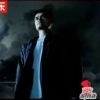Media file:
vid. 4.2 a
Title:
Jiang Tao and the Song of the Foolish Old Man, part 1
Source:
Heidelberg catalogue entry, DACHS Archive
Keywords:
Foolish Old Man, Jiang Tao, Cultural Revolution, Taking Tiger Mountain by Strategy, Yang Zirong
Jiang Tao and the Song of the Foolish Old Man, part 1

The singer, Jiang Tao 江涛 (1969–), made his debut when, as an amateur, he won a nationwide singing competition in 1988. He became a professional singer with the Qingdao Song and Dance Troupe (青岛歌舞团) in 1990. In 1992 he took first place in another song competition, this time organized by CCTV (全国第五届青年歌手大奖赛). His “Song of the Foolish Old Man,” released in 1997, became his most popular hit so far. Its peculiar pathos can best be understood with the Cultural Revolution blueprint as a backdrop. The dominance of the color red; the forces of sun and fire that, time and again, serve to wash the entire stage in red; the demonstration of the collective as a visible force (in history); the impressive shots of nature—huge mountains, rocks and gorges, immense sand steppes, majestic clouds; the juxtaposition of the collective working masses with technical achievements and feats such as airplanes, trains, huge bridges; the gestures Jiang Tao makes of holding his hands up into the sky, not at all unlike Yang Zirong in Taking Tiger Mountain by Strategy (see ill. 1.5 a, ill. 1.5 b, ill. 1.5 c, ill. 1.6, ill. 1.7; the sublime stone relief which appears, clearly reminiscent of the Cultural Revolution sculptures of the Foolish Old Man discussed in the beginning of this chapter; the (mostly red and sometimes yellow) Mao suit that Jiang Tao wears—all of these are elements typically found in Cultural Revolution artistic practice as well. There are differences, of course: some of the special effects, such as the superimposition of the old man as a ghost-like figure over parts of the setting, are obviously not the stuff that Cultural Revolution aesthetics were made of, but their similarities are much more striking than these negligible differences.






































